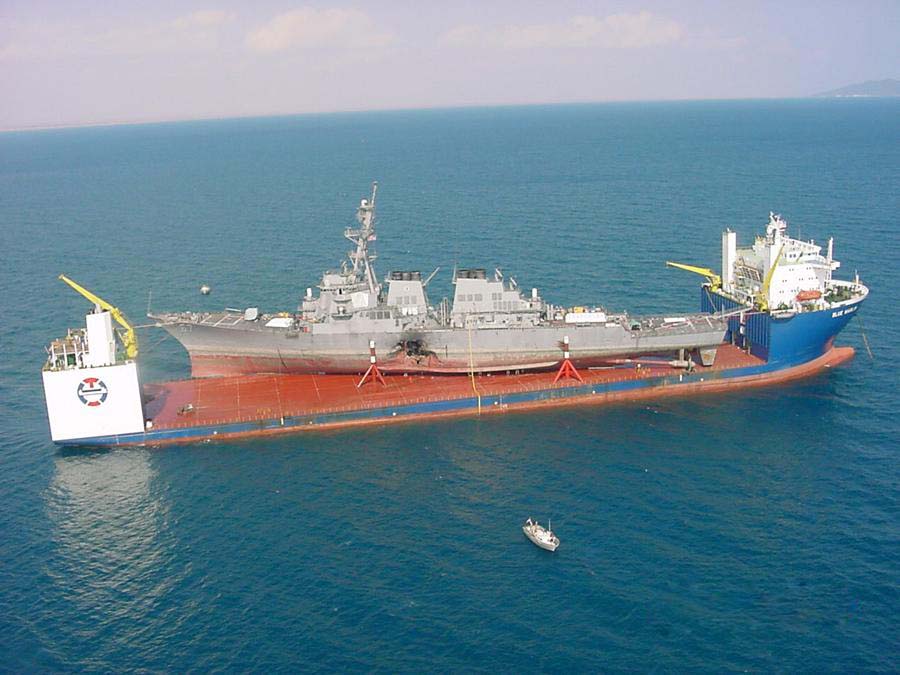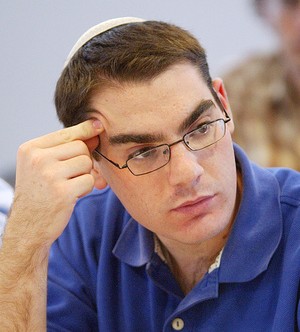Updates from the Military Commissions, 11/14-11/16: Wrapping Up the Physical Evidence Witnesses in al-Nashiri
Following the events of Nov. 13 summarized in the last post in this series, the military commission in United States v. al-Nashiri reconvened on Tuesday, Nov.

Published by The Lawfare Institute
in Cooperation With

Following the events of Nov. 13 summarized in the last post in this series, the military commission in United States v. al-Nashiri reconvened on Tuesday, Nov. 14 to continue testimony and the “preadmission” of evidence relating to physical evidence from the site of the attack on the USS Cole, identified as Appellate Exhibit 207.
Following preliminary matters (e.g., establishing that al-Nashiri’s absence was voluntary), the commission heard testimony from Gary Reinecke, a former FBI agent and current professor at Boston University. Prosecutor Mark Miller first questioned Reinecke about his background and experience in forensics, including his work in Kosovo, on the Oklahoma City bombing, and after the Sept. 11 terrorist attacks. Miller then directed Reinecke to his involvement in investigating the Cole bombing. Reinecke explained that he had been sent to Dubai in November 2000 to analyze materials and remains dredged from beneath the Cole. He discussed the techniques he and members of his team used, identified and explained photographs of the operation, and discussed the chain of custody with regard to certain pieces of evidence (specifically gears and metal parts that did not appear to be from the Cole itself) analyzed at the scene.
The presiding judge, Col. Vance Spath, announced that, in the absence of defense participation, he would continue to hold off on admitting the discussed exhibits into evidence. He then thanked Reinecke for his testimony, ordered him not to discuss it with others, and concluded with another extended discussion of the inappropriateness of the defense team’s conduct.
On Nov. 16, the commission again reconvened. Judge Spath began by once again noting the absence of most of the defense team and by establishing that al-Nashiri’s absence was voluntary. Next, Brig. Gen. Mark Martins of the prosecution provided a brief update about scheduling Professor Ellen Yaroshefsky’s testimony followingproceedings before federal district court in the Southern District of New York on Nov. 15, wherein Judge Gregory Woods denied Yaroshefsky’s request for a temporary restraining order preventing enforcement of the subpoena seeking her testimony. Finally, Spath briefly noted that he intends to discuss al-Nashiri’s desires in terms of legal representation with al-Nashiri himself.
Miller then called Kelly VanArsdale (appearing by video-feed from Virginia), an explosives technician for the FBI who worked on the Cole evidence (and who previously testified before the commission in March). Miller and VanArsdale quickly moved through a series of exhibits, affirming her signature and the chain of custody on each.
After a brief interlude wherein Spath once again commented on the defense’s strategy of nonparticipation, Miller called FBI agent William J. Davitch (who had also previously testified in March). Davitch reviewed how he came to Aden harbor to work on the Cole investigation, recounted certain forensic techniques he used and recommended, and described his role in transporting evidence back to the United States. Additionally, Davitch described advice he had given FBI agent Elizabeth Rosato at the Ramstein hospital in Germany about swabbing for explosive residue. After identifying his signature on chain of custody forms, Davitch too was thanked, dismissed, and ordered not to discuss his testimony with others.
Next, Miller called Robert Sibert, a retired FBI forensic scientist and Booz Allen contractor. Sibert recalled that he led the FBI disaster squad and was a member of the Rapid Deployment Team in October 2002, so he left for Yemen shortly after the Cole bombing. Sibert described his arrival in Yemen and his work as the leader of the FBI search and investigation team on the ground. He then explained the methods his team used in collecting and transporting evidence (and ensuring chain of custody). Again, Miller requested that the discussed exhibits be entered into evidence, and again Spath temporarily deferred a decision, thanked the witness, and ordered him not to do discuss his testimony with others.
Finally, Miller called Garrett J. McKenzie, a recently retired senior FBI agent and current employee of the Pinkerton corporate risk management company. McKenzie discussed his education and career, including a background in photography and work on 13 terrorism bombings. He then described hearing about the Cole bombing, gathering investigative materials, and traveling to Yemen. Like the previous witnesses, he described a somewhat unusual landing, where the plane made a short descent and was immediately surrounded by Yemeni army units, who only let them proceed after some discussion.
He explained that, like all FBI agents, he was involved in evidence gathering, but that his primary responsibility was photographing evidence. McKenzie then discussed the scene, specific photographs he took, and some of the evidence he collected, including fiberglass that appeared to be part of a boat that carried the explosives. He also described collection and preservation techniques used at the scene, and identified his signature on a number of the evidence forms. Over the course of the testimony, Miller moved to admit multiple exhibits (photographs and bags of residue) into evidence. Judge Spath deferred decision on each, and at the conclusion of the direct examination dismissed McKenzie in the same manner as the previous witnesses.
After a break for lunch, Martins indicated that the prosecution had been in communication with Yaroshefsky and that she was making the necessary travel arrangements to testify. The Commission then turned to two additional witnesses.
The first was Steven T. Krueger, a former FBI agent and explosives analyst. After some initial questions about his educational and professional background, Krueger explained that at the time of the Cole bombing he was a member of the Laboratory Division’s Rapid Deployment Team, and that he flew out to Aden immediately. Like prior witnesses, he described the Yemeni military’s immediate surrounding of the plane and insistence on putting their equipment through x-ray machines, and the FBI team’s subsequent decision to eventually set up camp at a more secure site than initially planned.
Krueger then discussed his expertise in “trace evidence” and his particular role in gathering samples for residue analysis. He described in detail his team’s procedure for the collection of residue, including the special Tyvek suits they wore, swabbing techniques, and precise locations from which they collected samples. As with previous witnesses, Krueger identified specific exhibits and his signature on the chain of custody forms. Again, Miller moved to exhibits into evidence and Spath deferred decision, dismissing and thanking Krueger.
Next, Miller called Elizabeth Rosato, a FBI agent currently stationed in Rome (who was mentioned in William Davitch’s testimony). Rosato discussed her background and experience, and how she deployed to Yemen after the Cole bombing as part of a New York-based Evidence Response Team. She described how she spent some time in Ramstein, Germany waiting for permission from the Yemeni government to continue on, and how she collected and packaged samples from survivors and victims while there. She also recounted the conversation she had in Ramstein with William Davitch where he advised her on what supplies to use to take these samples. In response to Miller’s questions, Rosato then walked through some of the techniques and affirmed that she had been involved in the collection of a number of specific exhibits (including buckles, boots, overalls, and an envelope with hair combings), identifying her name on various chain of custody forms. Judge Spath then thanked her and dismissed her with the usual instructions.
The hearing closed with the prosecution explaining that this was the last of their “207” witnesses, though additional physical evidence relating to other sites would likely be forthcoming. Martins also indicated that testimony from Yaroshefsky had been scheduled for 2:00pm the next day.



.jpg?sfvrsn=d5e57b75_7)

